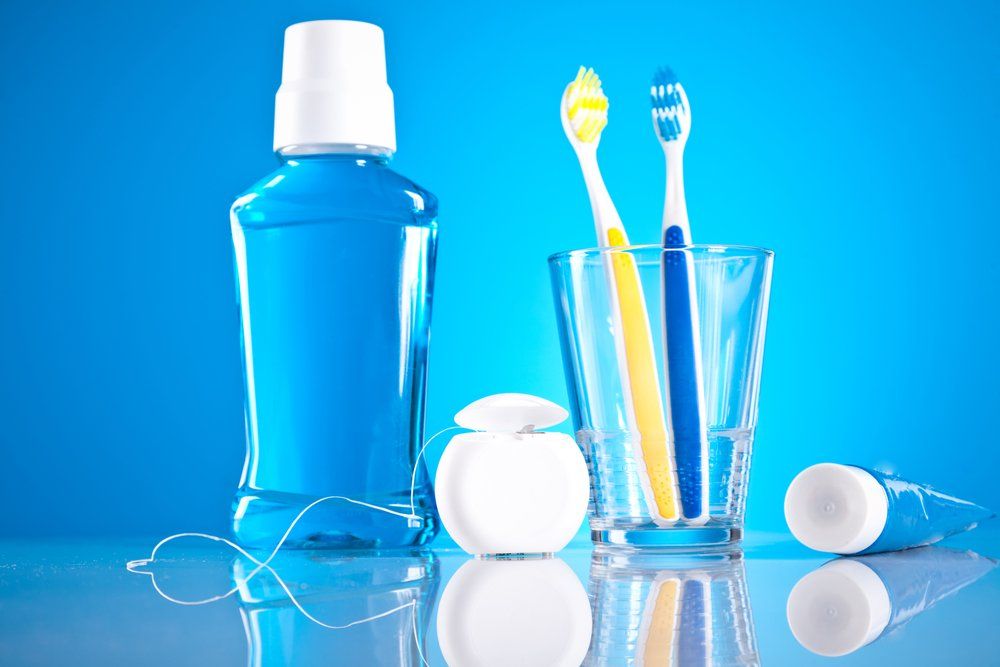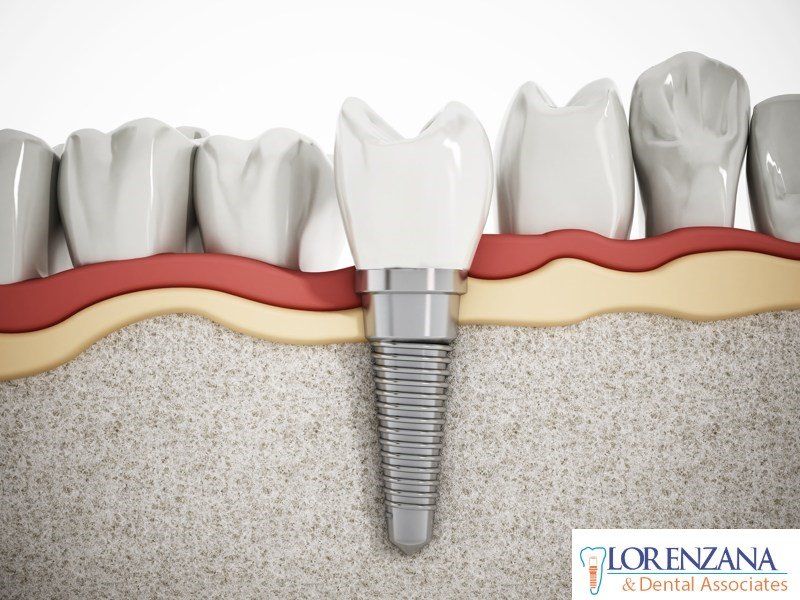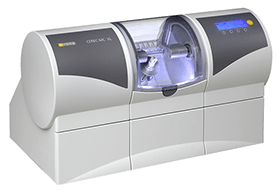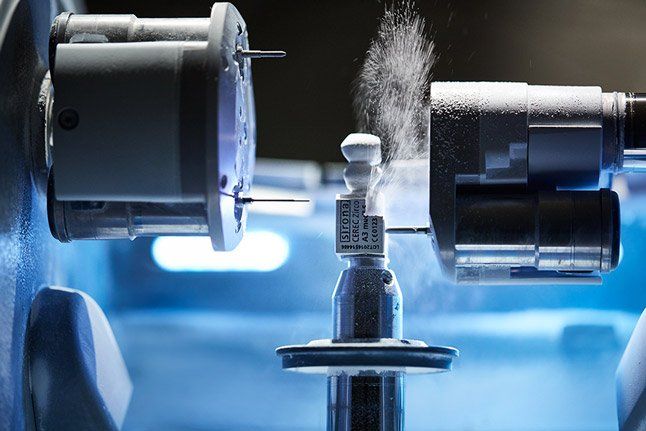Fixed vs. Removable Dentures
Dr. Rafael Lorenzana • September 6, 2014
Trying to make a decision between a fixed or removable bridge? An evaluation of your remaining teeth, bone, gum tissue, as well as your need for lip, and cheek support will determine the right option for you.
To help you make this decision, you can rely on the expertise of your prosthodontist, a specialist in advanced crown, bridge, and denture work. He/She will explain why sometimes the aesthetic, hygienic, and long-term maintenance advantages of a removable bridge or “overdenture” that fits on top of implants is a better choice than a fixed bridge.
And if those reasons aren't enough, it is also important to note that people who have previously worn a denture prefer this treatment solution when it comes to their speech. Patients may fail to consider that there is a lot of "hardware" in prosthetic dental restorations, especially those supported by implant dentistry. Some are difficult to clean and maintain. You should know what you are up against from the beginning and be prepared for the personal commitment to do what is necessary for the preservation of your dental health. Non-removable restorations customarily offer patients a better sense of having a permanent tooth replacement.
They are harder to clean, somewhat more prone to recurrent dental disease, and more difficult to repair or modify. Patients who opt for fixed prosthodontics dentistry must therefore assume a dedicated role in the maintenance of their oral health through scrupulous dental hygiene practices and regular professional dental care. Removable restorations are much easier to clean and to service. They may not be as stable as a non-removable restoration, and often require longer adjustment periods. They are generally easier to fabricate and they are less costly than non-removable restorations.
In some cases, they afford better support of the soft tissues of the mouth. Removable partial dentures can be constructed faster and less expensively than fixed (non-removable) or implant restorations. They may be supported by natural teeth and soft tissue. Unfortunately, partial dentures are likely to damage the remaining teeth used for support, whereas a fixed implant can restore the missing support that will help protect the remaining teeth.
Complete (removable) dentures are the least stable of dental restorations, easily loosened and often the cause of irritation and embarrassment. Dentures also cause further bone loss. There are many dental implant options that should be explored as alternatives to full dentures. If you're interested in getting dentures, call us at 1-800-7830198.
Lorenzana & Dental Associates is proud of having the only certified by the American Board of Prosthodontist in the country, we are leader in dental rehabilitation. Send us an email with your recent x-rays and Dr. Lorenzana will be happy to provide a free quote for you. clinica@lorenzanadds.com Source: Dentistry.com
Dentaduras Fijas vs. Dentaduras Removibles.
Tratando de tomar una decisión entre un puente fijo o removible? Una evaluación de los dientes restantes, hueso, tejido de las encías, así como de su labio, y apoyo la mejilla determinarán la opción correcta para usted.
Para ayudarle a tomar esta decisión, puede confiar en la experiencia de su prostodoncista, un especialista en la coronas dentales, puentes, y dentaduras. Él o ella le explicará las ventajas estéticas, de higiene y mantenimiento a largo plazo de un puente removible o "dentadura" . Y si esas razones no son suficientes, también es importante tener en cuenta que las personas que han usado previamente una prótesis prefieren esta solución de tratamiento cuando se trata de mejorar el habla. Los pacientes deben dejar de pensar que hay un montón de "hardware" en las restauraciones dentales de prótesis, especialmente aquellas apoyadas por la implantología dental.
Algunos son difíciles de limpiar y mantener. Usted debe saber lo que está en contra desde el principio y estar preparado para el compromiso personal de hacer lo que es necesario para la preservación de su salud dental. Restauraciones no desmontables habitualmente ofrecen a los pacientes una mejor idea de tener un reemplazo permanente de los dientes.
Son más difíciles de limpiar, un tanto más propensos a la enfermedad dental recurrente, y más difíciles de reparar o modificar. Por lo tanto, los pacientes que optan por la odontología prostodoncia fija deben asumir un papel específico en el mantenimiento de su salud oral a través de prácticas de higiene dental escrupulosos y cuidado dental profesional regular.
Restauraciones removibles son mucho más fáciles de limpiar y dar servicio. Pueden no ser tan estable como una restauración no extraíble, ya menudo requieren períodos de ajuste más largos. Por lo general son más fáciles de fabricar y son menos costosas que las restauraciones no extraíbles. En algunos casos, ofrecen un mejor soporte de los tejidos blandos de la boca.
Dentaduras parciales removibles se pueden construir más rápido y menos costoso que las restauraciones (no extraíble) o implantes fijos. Pueden ser apoyados por los dientes naturales y los tejidos blandos. Por desgracia, las dentaduras parciales son propensos a dañar los dientes restantes se utilizan para el apoyo, mientras que un implante fijo puede restaurar el apoyo que nos faltaba para ayudar a proteger los dientes restantes. Las dentaduras completas (desmontables) son los menos estables de las restauraciones dentales, fácilmente aflojado y, a menudo la causa de la irritación y la vergüenza.
Las dentaduras también pueden causar la pérdida ósea. Hay muchas opciones de implante dental que deben ser exploradas como alternativas a las prótesis completas. Si usted está interesado en obtener prótesis dentales llámenos al 1-800-7830198. Lorenzana y Dentales Asociados se enorgullece de tener el único dentista certificado por el American Board of Prosthodontics en el país. Somos líderes en la rehabilitación dental. Envíenos un correo electrónico con sus radiografías recientes y el Dr. Lorenzana estará encantado de proporcionar un presupuesto gratuito para usted. clinica@lorenzanadds.com
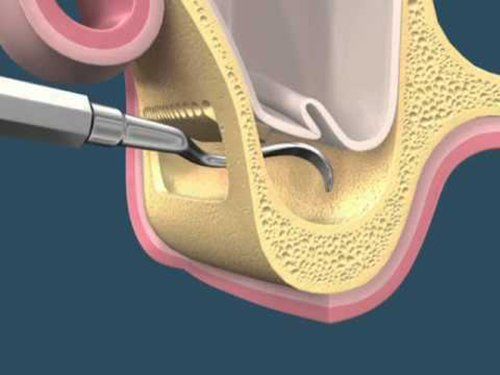
¿Qué Es? El levantamiento de seno maxilar es una cirugía que agrega hueso a tu maxilar superior en el área de tus molares y premolares. El hueso es agregado entre tu maxilar y tus senos maxilares, los cuales se encuentran a cada lado de tu nariz. A modo de hacer espacio para el hueso, la membrana sinusal necesita ser levantada. ¿Para Qué Se Usa? Un levantamiento de seno se realiza cuando no hay suficiente altura en el hueso del maxilar, o cuando los senos están demasiado próximos al maxilar, y los implantes dentales no se pueden colocar por tal motivo. Hay varias posibles razones para que esto suceda: · Muchas personas que han perdido los dientes de su maxilar superior — particularmente los dientes posteriores o molares — no tienen suficiente hueso para que los implantes dentales sean colocados. Una vez se pierde un diente, el hueso en esa área comienza a ser reabsorbido. Si los dientes han estado ausentes por un largo tiempo, con frecuencia no hay suficiente hueso restante para colocar implantes. · Se pudo haber perdido hueso debido a alguna enfermedad periodontal (de las encías). · El seno maxilar puede estar demasiado próximo al maxilar superior. La forma y tamaño del seno varía de persona a persona. El seno también puede agrandarse a medida envejeces. ¿Cómo Se Hace? Tu cirujano hará una incisión y levantará la encía donde tus dientes posteriores solían estar, exponiendo el hueso. Se hace un pequeño agujero ovalado en el hueso. La membrana que reviste el seno en el lado opuesto al agujero separa tu seno de tu maxilar. Esta membrana se empuja suavemente hacia arriba y lejos de tu maxilar. Material de injerto óseo es insertado en el espacio donde el seno solía estar. Una vez el hueso está en su lugar, el tejido es suturado. Lo Que Sigue Después del procedimiento, podrías tener algo de inflamación en el área y podrías sangrar por tu boca o nariz. No te suenes la nariz o estornudes con fuerza. Hacer eso podría causar que el material de injerto óseo se mueva y que los puntos de sutura se aflojen. Puede ser que tu dentista te prescriba medicina para prevenir el congestionamiento y la inflamación. También necesitarás medicina para el dolor, un antibiótico y enjuague bucal antimicrobiano para prevenir una infección. La mayoría de los pacientes solamente experimentarán un poco de incomodidad luego de un procedimiento de levantamiento de seno. Verás al especialista luego de algunos días. Él/ella evaluará el sitio de la cirugía y retirará los puntos de sutura si fuese necesario. Podrías tener que visitar al especialista un par de veces más para que se asegure de que el área está sanando apropiadamente. Tus implantes se colocarán entre cuatro y nueve meses después del levantamiento de seno, dependiendo de la cantidad de hueso requerida. Esto permite que haya tiempo para que el material de injerto óseo se una a tu hueso.
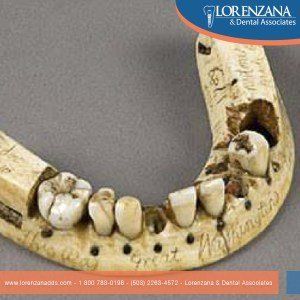
Hoy en día la prótesis dental nos permite reemplazar los dientes perdidos con un aspecto muy estético y natural, devolviendo a la boca la función perdida; pero eso no fue siempre así. Las primeras prótesis dentales de las que tenemos constancia provienen de los etruscos del siglo VIII a. C. y se conserva en el Museo de la Facultad de Odontología de París. Los etruscos utilizaron dientes de animales para reemplazar las piezas faltantes ensambladas sobre bandas de oro, lo cual muestra habilidades muy altas por parte de ellos. Creemos que los fenicios ya usaron oro blando y alambre de oro para la construcción de prótesis dentales. También utilizaron soldaduras y modelos de impresiones. Hacia 754 aC , los etruscos, hábiles artesanos de la época, producían pónticos muy complejos. Empleaban bandas de oro soldadas cada una por pónticos hechos con diferentes piezas dentales de humanos o animales.
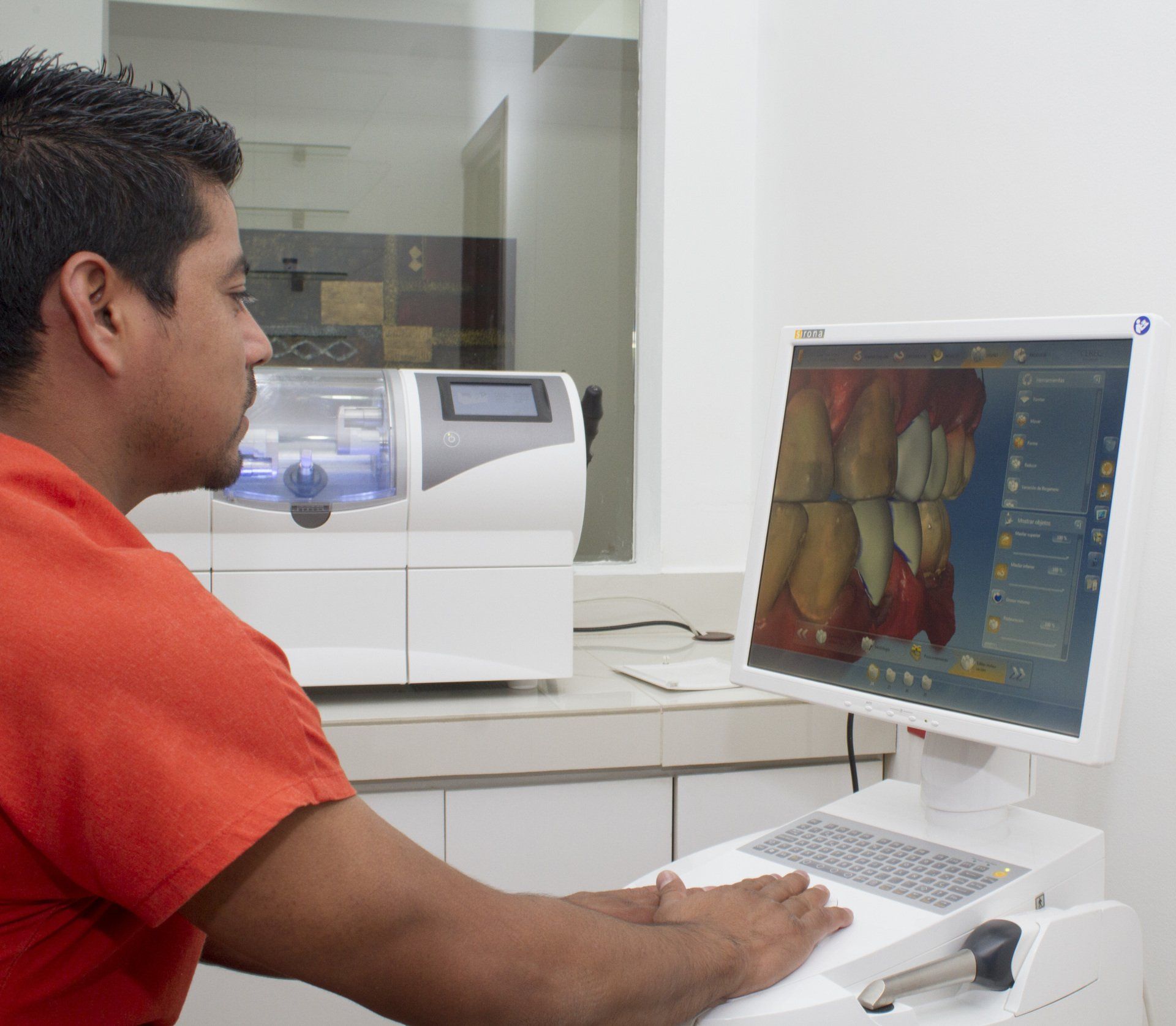
At Lorenzana & Dental Associates, we love our CEREC system - and our patients love it, too! Thanks to CEREC, we can give people the convenience of getting their teeth fixed (e.g. crowns, veneers) in as little as a single visit to our clinic. That is just impressive, right? But how did such an incredible technology as CEREC come into existence? Well, we will talk a little about that in this blog, which is the first in a series of blogs about this system. Let's get to it!
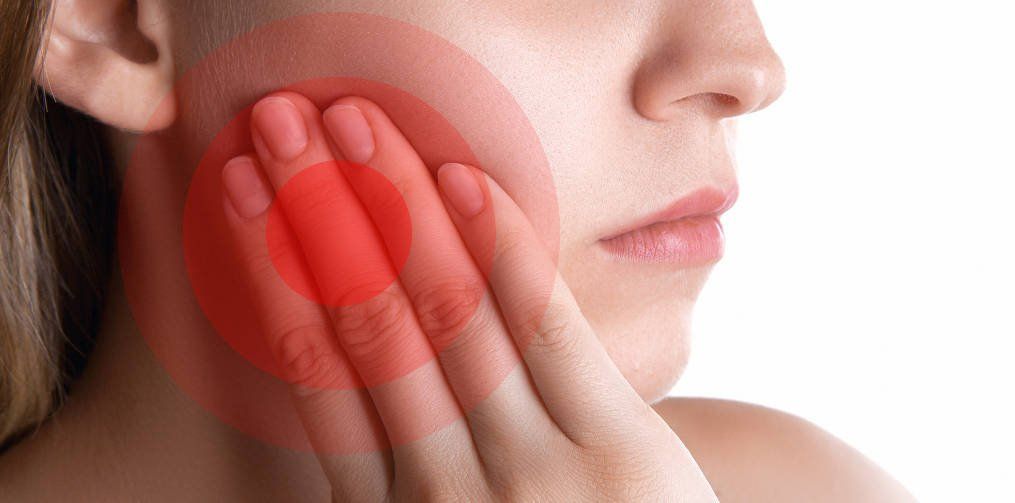
Temporomandibular joint disorders are conditions that cause discomfort and inhibit the proper functioning of the jaw joint and muscles that control jaw movement. Causes In most cases, the cause of TMJ disorders is not evident. However, here is a list of potential causes: External trauma, such as a hard hit to the head or jaw. Tooth grinding or jaw clenching. Poor alignment between top and bottom teeth. Excessive chewing (e.g. gum or fingernails). Overextending the TMJ while eating large things. Degenerative diseases. Symptoms There are various symptoms that could be related to TMJ disorders. Examples of these are the following: Pain in facial, jaw, neck or back muscles. Swelling. Muscle stiffness or limited movement of the jaw. Clicking, popping or grating sounds accompanied by pain when moving the jaw. Teeth not fitting comfortably together. Jaw not opening uniformly or locking. Headache or earache. Difficulty swallowing. Diagnosis There is not always a straightforward way of diagnosing TMJ disorders. Exact causes and symptoms are not clear, and that means the discomfort someone is experimenting could be due to different health issues. Your doctor will take your symptoms and medical history into consideration and then will examine areas of discomfort, including the head, neck, face, and jaw. The doctor might also use x-rays in the analysis of your case. Treatment Reversible Treatments Conservative treatments do not invade the tissues of the face, jaw, or joint, or involve surgery. Reversible treatments do not cause permanent changes in the structure or position of the jaw or teeth. It is advisable that you try these first, before considering more expensive and permanent ones. Muscle and ligament tightness can be helped with jaw stretching and relaxing exercises as advised by your doctor. If the jaw becomes locked, it may be necessary to manipulate the joint back into place under a general anaesthetic. The most common TMJ issues are temporary and do not get worse. Short-term use of pain relievers, such as ibuprofen, may be sufficient. A stabilization splint or a bite guard may provide relief. Stabilization splints should only be used for a short time and should not cause permanent changes in bite. Permanent Treatments There is often debate around the use of permanent methods to treat TMJ disorders. There are no long term studies that show the efficacy of these methods, plus they are extensive and often more expensive than reversible treatments. The bite may be adjusted by polishing teeth, using reconstructive dentistry, or fitting braces. A repositioning splint may be fitted, which over time will permanently change the position of the jaw, ligaments and muscles. There may be an effect on teeth alignment, so more dental work may be needed to adjust the teeth. There is even the option to replace the jaw joint with artificial implants, but it should be considered a last resort. Self-Care In many cases, self-care measures can help alleviate the symptoms of TMJ disorders: Eating soft foods. Applying cold or warm compresses. Avoiding excessive jaw movements (shouting, gum-chewing, and wide yawning, for instance). Practicing gentle jaw stretching and relaxing exercises. Resting the jaw as much as possible. SOURCES: National Institute of Dental and Craniofacial Research Health Navigator



